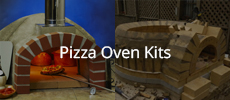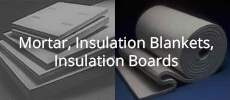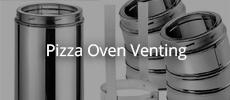X
-
A fibre cement sheet will certainly not cope with the heat if placed directly under the floor bricks.
-
You've heard the negatives, a couple of ideas that may help.Originally posted by lowspeed View PostSo first layer of 5" using 5:1 mix and then a 2" layer using 10:1 mix and then just perlite and lay the bricks directly on perlite.
Can you point out any negatives?
Mix different grades of perlite to minimise the voids.
Use larger floor bricks if possible to spread the load.
Try to vibrate or compact the perlite prior to laying the floor bricks.
Consider using a fiber cement sheet on top of the perlite to minimise movement or maybe even put the 5:1 on the top instead of the bottom with the fibre cement sheet between layers.
I really think you may be able to make it work. Please document it if you go ahead and the results, so we can all learn
Leave a comment:
-
Hi lowspeed, that oven you have linked is nothing like the mass majority of ovens featured on this forum!Originally posted by lowspeed View Post
How do you explain this oven using loose perlite under the floor?
https://youtu.be/CZRX61uz9Y4?t=350
Apart from the massive size it does not appear to have any insulation over the dome just three layers of brick! I can only imagine the oven is kept permanently hot and in permanent use?
If that is in fact just plain perlite under the slabs, then that is the first time I have ever seen it done that way and it is most certainly not a method I would use, however that is an amazing build just not a good method for a garden home, pizza oven!
I also feel that might not be just ordinary perlite as the stuff I have used seems even more aerated and light but in any case I can not think of any logical reason to use dry perlite under fire bricks in a more Conventional wood fired oven!
Leave a comment:
-
The internet abounds with videos that give poor advice. Most are by folk who have only made one oven. As SS has already advised, floor bricks sitting on loose perlite are likely to compress the perlite over time, resulting in an uneven floor that can make working the oven more difficult.
Leave a comment:
-
How do you explain this oven using loose perlite under the floor?Originally posted by SableSprings View PostThe 10:1 has virtually no compressive strength. So even if you only were putting under the cooking floor bricks, you'd very likely see settling and an uneven floor after a short period of oven use. It is just more practical and structurally sound to have a consistent insulation base (5:1 or ceramic board) for the entire oven (dome outer footprint & cooking floor).
Leave a comment:
-
The 10:1 has virtually no compressive strength. So even if you only were putting under the cooking floor bricks, you'd very likely see settling and an uneven floor after a short period of oven use. It is just more practical and structurally sound to have a consistent insulation base (5:1 or ceramic board) for the entire oven (dome outer footprint & cooking floor).
Leave a comment:
-
Thanks for the answer, I meant the 10:1 mix just under where the floor is, not under the dome.Originally posted by SableSprings View PostWelcome to the forum community! Take some time to read some of the well documented builds in the Newbie section thread "Hidden treasures..." To answer your question, 10:1 perlcrete or vermicrete is not strong enough for supporting the oven's weight. The 5:1 mix is used underneath the cooking floor and the 10:1 is used to insulate the topside where you don't need much, if any, compression strength. Be aware that although less expensive than ceramic insulation board, it takes twice as much to match the insulation value and it takes much, much longer to remove the moisture.
Our best practice advice for any hearth is to drill or form 3-5 weep holes through it to allow any moisture an exit route out/under the oven footprint. We also suggest laying some broken tiles on top of the hearth to provide a small air gap between the hearth and your base insulation. The threads in the forum contain a wealth of good advice, great pictures to illustrate techniques, as well as successful and not so successful build results... take your time to develop a good plan before you buy or build anything!
Would that not work?
Leave a comment:
-
Welcome to the forum community! Take some time to read some of the well documented builds in the Newbie section thread "Hidden treasures..." To answer your question, 10:1 perlcrete or vermicrete is not strong enough for supporting the oven's weight. The 5:1 mix is used underneath the cooking floor and the 10:1 is used to insulate the topside where you don't need much, if any, compression strength. Be aware that although less expensive than ceramic insulation board, it takes twice as much to match the insulation value and it takes much, much longer to remove the moisture.
Our best practice advice for any hearth is to drill or form 3-5 weep holes through it to allow any moisture an exit route out/under the oven footprint. We also suggest laying some broken tiles on top of the hearth to provide a small air gap between the hearth and your base insulation. The threads in the forum contain a wealth of good advice, great pictures to illustrate techniques, as well as successful and not so successful build results... take your time to develop a good plan before you buy or build anything!
Leave a comment:
-
42" Pizza Build.
I was thinking of doing a perlite cement as insulation, would a tiered approach work well?
So first layer of 5" using 5:1 mix and then a 2" layer using 10:1 mix and then just perlite and lay the bricks directly on perlite.
Can you point out any negatives?Tags: None






Leave a comment: